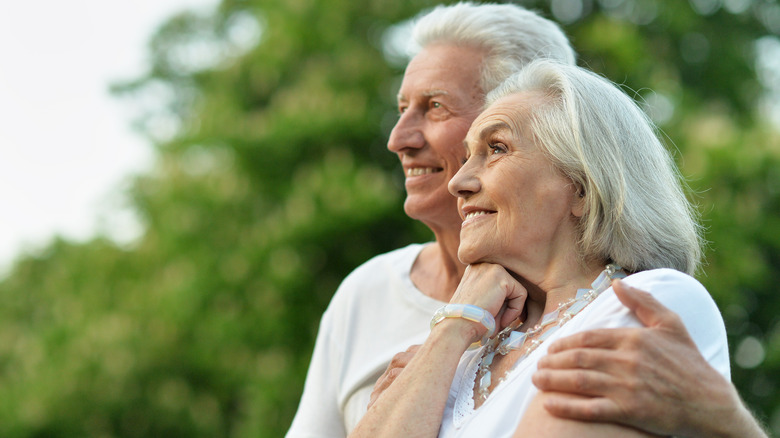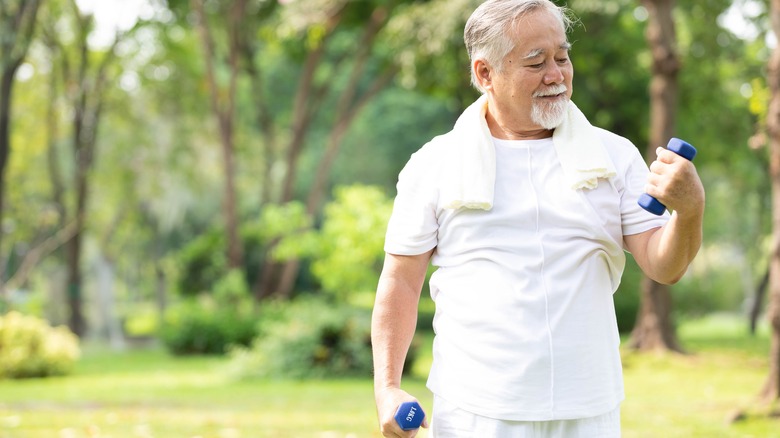Fitness Habits That Can Help You Live To 100
If your goal is to live to 100, staying active may help you get there. Physical fitness is an important factor to consider if you are interested in longevity, according to Nathan LeBrasseur, professor of physical medicine and rehabilitation at the Mayo Clinic in Rochester, Minnesota. He explains to Time that, "Exercise is the best defense and repair strategy that we have to counter different drivers of aging." There seems to be evidence to support this theory.
The American Heart Association (AHA) reports that mortality is proportional to cardiorespiratory fitness (the ability of your heart and lungs to deliver oxygen to the rest of your body during exercise). This is because exercise improves the health of your heart, lungs, and muscles, reports WebMD. Aerobic activity is one way to improve your cardiovascular conditioning (via Cleveland Clinic), and these kinds of activities include jogging, walking, hiking, swimming, rowing, cycling, aerobics classes, step aerobics, any sport that gets your heart rate up, and using exercise machines like treadmills or ellipticals, per WebMD.
Pair cardio with strength training for a long life
While cardio is linked to living longer, you can increase its benefits by adding strength training. At least that's what one study suggests. The 2022 study, published in the British Journal of Sports Medicine, reveals that moderate to vigorous aerobic exercise combined with weightlifting was linked to a 41% lower mortality rate.
The Centers for Disease Control and Prevention (CDC) suggest that adults get 150 minutes of moderately intense physical activity per week, and they should strength train at least two days per week. Strength training should engage all of the large muscle groups in your body (legs, hips, back, shoulders, abs, and arms) and you should complete three sets of exercises that include eight to 12 repetitions. You know you're working with the right amount of weight if the last repetition is tough enough that you wouldn't be able to do another on your own. And you don't necessarily have to use weights — other options include resistance bands or bodyweight exercises.


